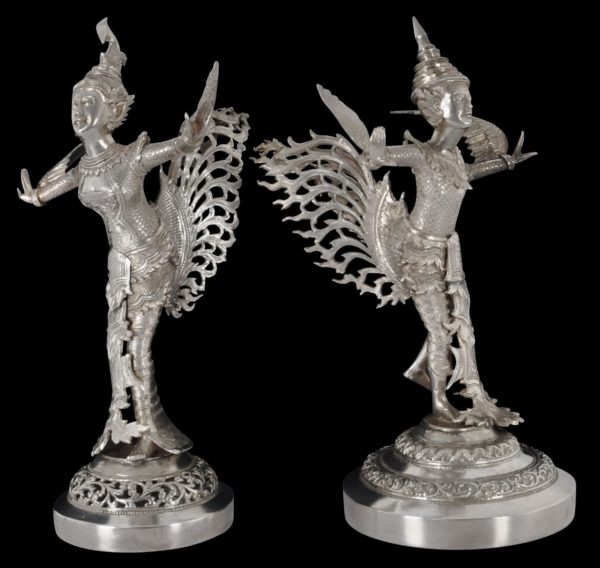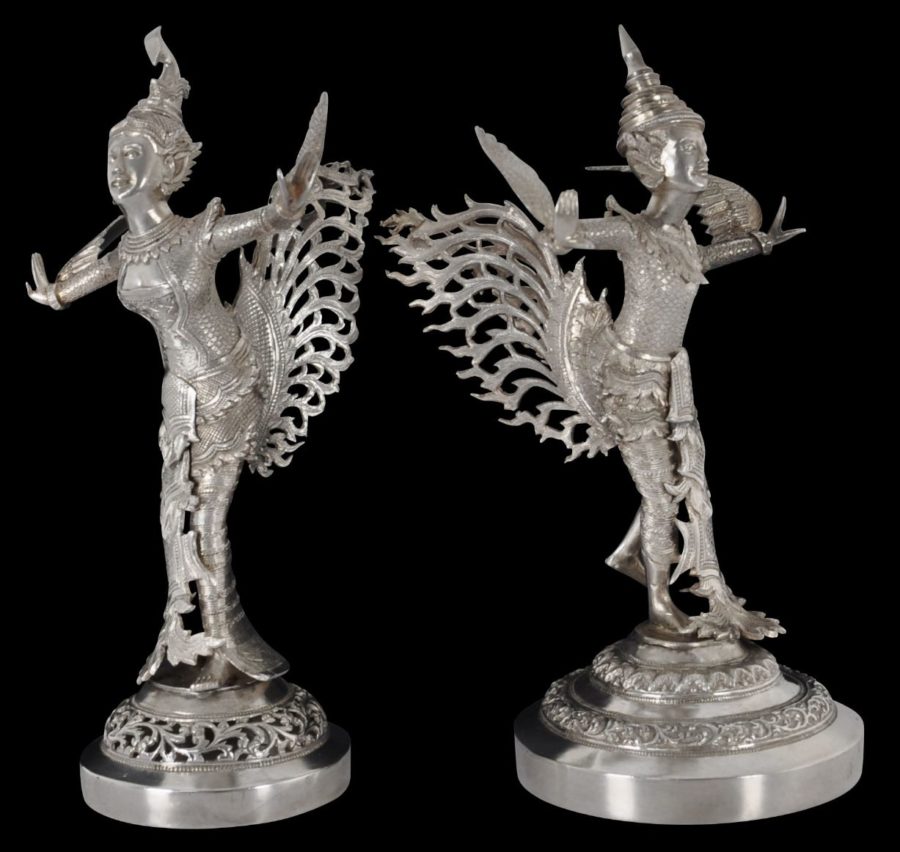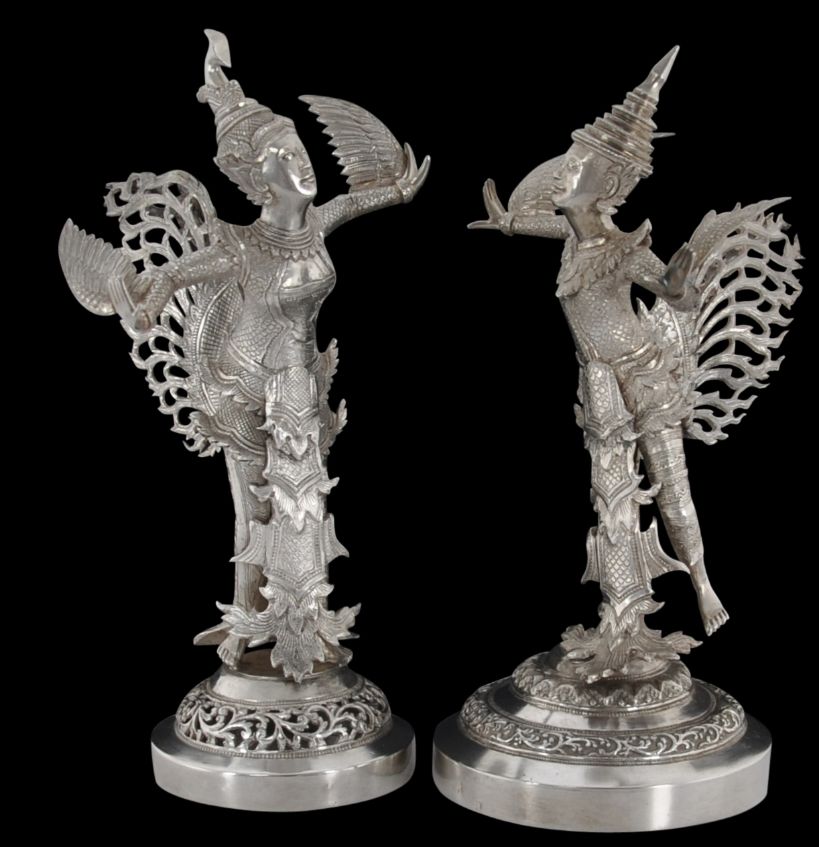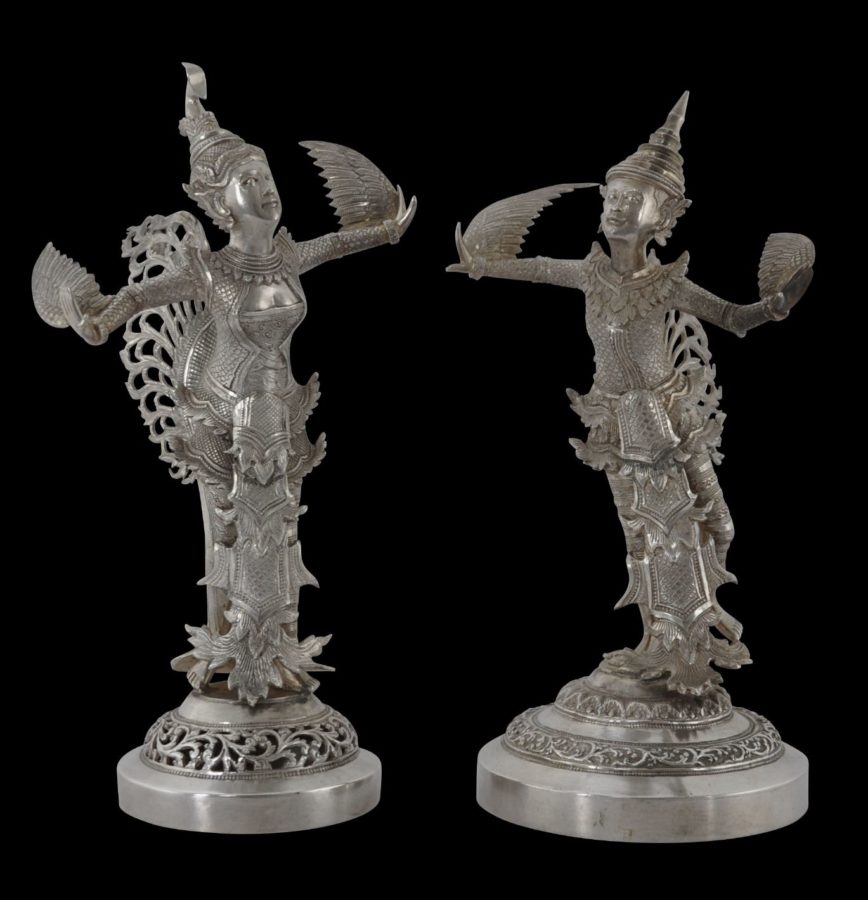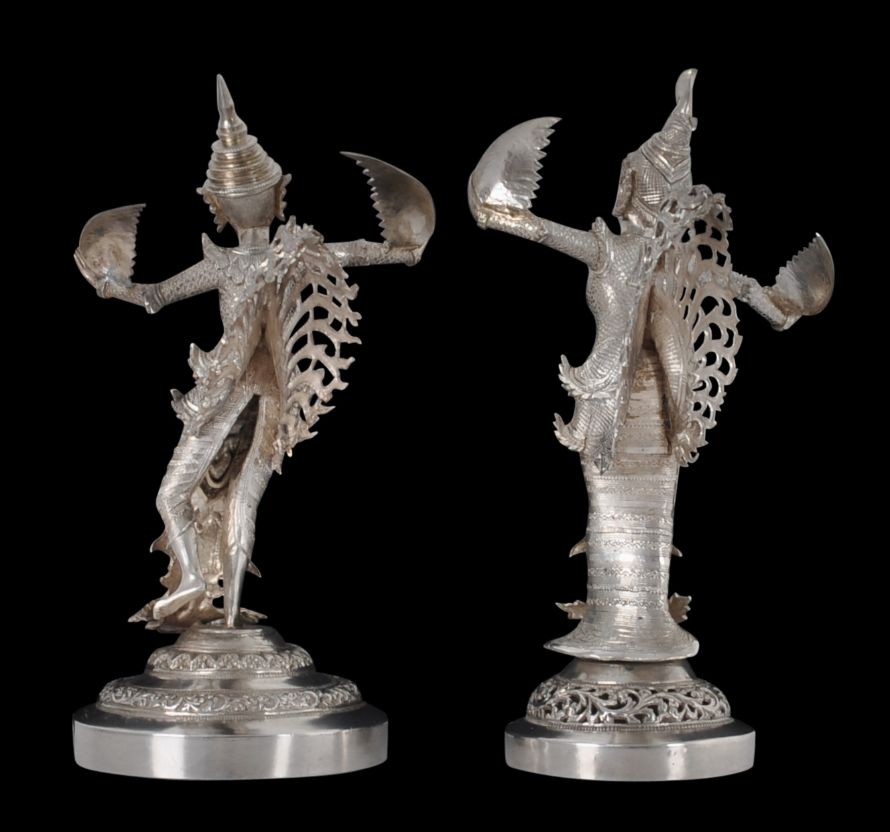This splendid pair of figures in cast, chased and engraved solid silver represent a matched male and a female dancers dressed as a pair of kinnara. This is the first time that we have encountered a matched pair of Burmese kinnara dancers in silver. Befitting their status, they are dressed in a way that mirrors royal costume other than for the wings attached to the arms. The female figure wears a skirt (more visible from the back) which has the wavy acheik motif which tended to be reserved for the dress of court ladies.
Kinnara are mythical creatures that are half human and half bird that dwell in the Himaphan (Himavanta), a legendary forest which surrounds Mount Meru, the mythical abode of the gods, in Hindu and Buddhist mythology.
The male is known as the kinnara or keinnaya and the female as the kinnari or kinnayi.
The kinnara also relate to the Jataka, the past lives of the Buddha. In the Burmese version of Buddhism, several of the lives of the Buddha were spent in the form of a kinnara. The kinnara is one of the 108 symbols to be found on representations of the footprint of Buddha.
The kinnara and kinnari couple also is considered the symbol of the Karenni people, one of Burma’s minority groups.
The pair here have wings on their arms as well as astonishing, pieced tails. Their detailed costumes are superb as are their faces, their headgear and other detailing.
One figure clearly is male and the other is clearly female, according to the dress and other features.
They both stand on domed platforms. These are different – but accord with the sex of each. The male kinnara dancer stands on a larger platform and the female kinnari dancer stands on one that is not as wide but is pieced.
This pair is excellent in terms of the quality of the silver-smithing. It is also the first time we have encountered such a pair.
References
Dehejia, V., Delight in Design: Indian Silver for the Raj, Mapin, 2008.
Fraser-Lu, S., Silverware of South-East Asia, Oxford University Press, 1989.
Fraser-Lu, S., Burmese Crafts: Past and Present, Oxford University Press, 1994.
Kunlabutr, P., Burmese Court Textiles – ‘Luntaya-acheiq’, Amrin Printing & Publishing, 2004.
Tilly, H.L., The Silverwork of Burma (with Photographs by P. Klier), The Superintendent, Government Printing, 1902.
Tilly, H.L., Modern Burmese Silverwork (with Photographs by P. Klier), The Superintendent, Government Printing, 1904.


